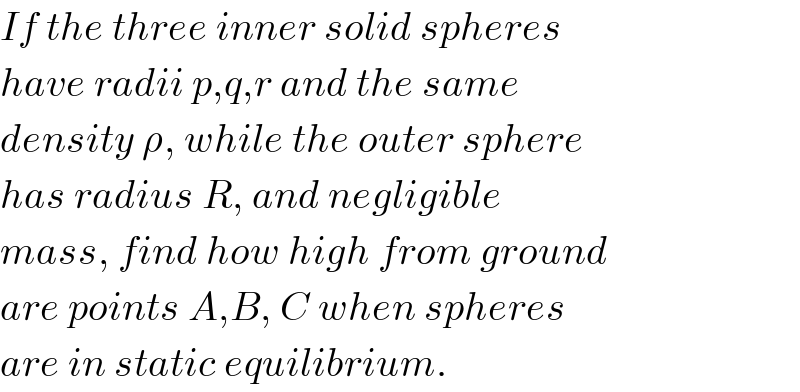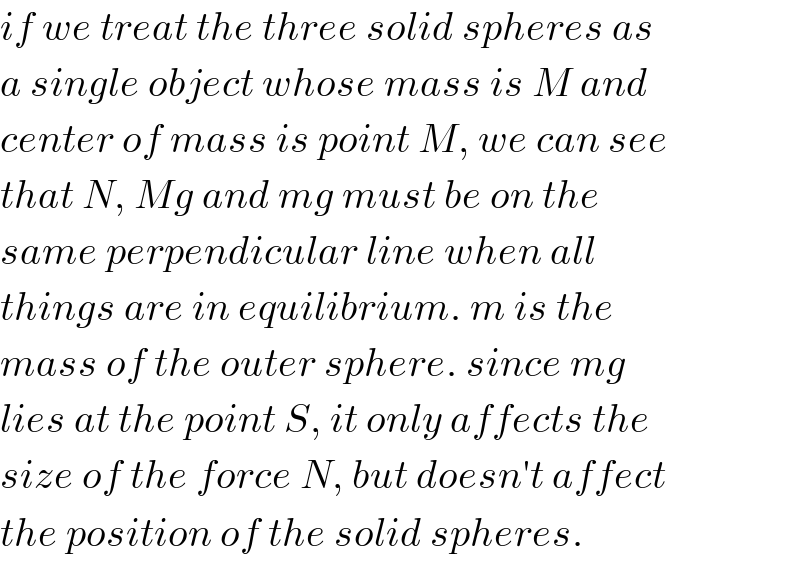
Question and Answers Forum
Question Number 71645 by ajfour last updated on 18/Oct/19

Commented by ajfour last updated on 18/Oct/19

Answered by mr W last updated on 19/Oct/19

Commented by ajfour last updated on 19/Oct/19

Commented by mr W last updated on 20/Oct/19
^2 (r+p)^2 −4(p+q+r)pqr))/(p+q))+v((2(√((p+q+r)pqr)))/(p+q))=(1/2)[(r+p)^2 +(2R−p−r)(r−p)] ⇒v=(((p+q)^2 [p(r+p)+R(r−p)]−[p(p+q)−R(p−q)](√((p+q)^2 (r+p)^2 −4(p+q+r)pqr)))/(2(p+q)(√((p+q+r)pqr)))) ⇒w=(√((R−p)^2 −u^2 −v^2 )) let δ=MS=(√((u−s)^2 +(v−t)^2 +w^2 ))=(√((R−p)^2 +s^2 +t^2 −2(su+tv))) GS=R ((x_G −s)/(s−u))=(R/δ) ⇒x_G =(1+(R/δ))s−(R/δ)u similarly ⇒y_G =(1+(R/δ))t−(R/δ)v ⇒z_G =−(R/δ)w eqn. of ground plane with MS as normal: normal MS=(u−s,v−t,w)=δ eqn. of ground plane: (u−s)(x−x_G )+(v−t)(y−y_G )+w(z−z_G )=0 distance of point A,B,C to ground plane: d_A =((∣(u−s)x_G +(v−t)y_G +wz_G ∣)/δ) d_B =((∣(u−s)(x_G −p−q)+(v−t)y_G +wz_G ∣)/δ) d_C =((∣(u−s)(x_G −x_C )+(v−t)(y_G −y_C )+wz_G )∣)/δ)](Q71723.png)
Commented by mr W last updated on 19/Oct/19

Commented by mr W last updated on 19/Oct/19

Commented by mr W last updated on 20/Oct/19

Commented by mr W last updated on 20/Oct/19

Commented by ajfour last updated on 20/Oct/19

